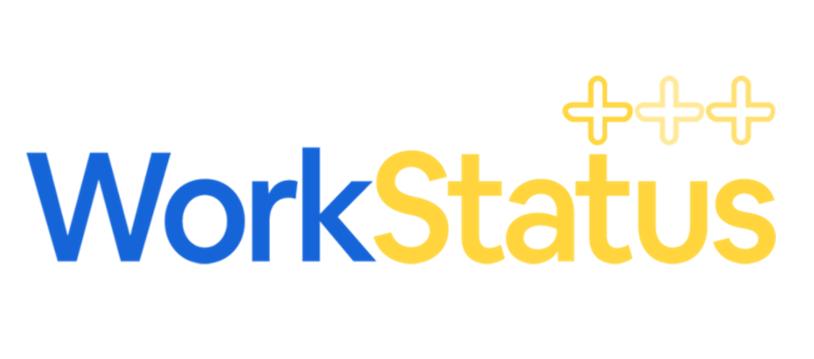In the midst of the deadly effects of COVID-19, some good came from it. The most notable advantage was assisting businesses in recognizing that work-from-home arrangements are viable for the vast majority of sectors.
Some businesses, having no choice but to adapt, reluctantly accepted the challenge but are now starting to reap the many advantages of remote work.
Even as the world begins to return to normalcy after the health catastrophe, it appears that purely remote work is not the ideal long-term answer. According to a survey conducted by Microsoft, 67 percent of employeeswant to spend more time with coworkers in person. As a result, businesses are turning to hybrid teams.
The combination of remote workers and onsite employees has made the workplace run more smoothly. It brings together two work styles that are better for businesses in fostering teamwork, collaboration, knowledge sharing, etc., while also reducing real estate costs by saving on infrastructure expenses.
But, Is it easy to manage hybrid teams?
Managing a hybrid team has its challenges and opportunities. Not only do you have to worry about tasks, deadlines, and the bottom line, but there are also dynamics between your employees that need to be negotiated. This blog post includes six metrics of employee engagement that can help you measure how well your hybrid team is performing so you can improve it if needed!
What do you mean by Hybrid Team?
Simply said, a hybrid team is a company that mixes both work from home and conventional office practices. Some businesses may demonstrate it by allowing their workers to work remotely on certain days and requiring them to report in on other days.
There are many other variant forms of a hybrid arrangement, but its fundamental concept is that the business uses both a work-from-home and an office-based approach. More and more enterprises are moving to this sort of setup for the long run, while an even more significant proportion has done so already. So it appears that hybrid teams will be the next big disruption in business and personnel management.
Why are hybrid teams so popular among Enterprises?
There are several reasons why any enterprise might want to implement a hybrid team strategy. Here are the three biggest drivers:
1. Employees have different preferences for work styles, and some may feel that they perform better from home or in an office setting. A telecommuting basis can help them pursue their preferred work method and increase their satisfaction with their job. If this enables the business to hire better workers who are more committed to the organization’s goals, it can improve its overall productivity.
2. A telecommuting policy may enable businesses to save money by cutting down on office overhead costs like real estate leases and utilities.
3. A business may hire and retain better employees if they offer a work-from-home plan as part of their benefits package, making the process more cost-effective.
In other words, it’s generally a good idea for businesses to begin considering implementing hybrid teams as part of their overall strategy because there are many benefits to both the business and its employees.
In the next section, we will get an understanding of a few KPIs that will help you measure the performance of a hybrid team:
6 Most Important KPIs To Measure The Performance Of Hybrid Teams
Here are some of the essential KPIs to measure the performance of Hybrid teams-
1. How Effective is communication among team members?
The majority of users reported that they like to continue working from home, but the bigger problem on people’s minds is how to maintain optimal communication amid mixed conditions. When it comes to enhancing communication, technology has come a long way. We now have video conferencing, chat applications, email management systems, project management dashboards, and other technology to assist us in spite of our physical distance.
The primary critical performance indicator managers should track in remote and hybrid work environments is staff members’ response time. However, there is no fixed number to measure the response time. Some industries may allow five minutes for a response, while others might need an hour.
The ideal approach is to calculate the average time for the whole team to communicate internally and externally, then strive to reduce that figure every time.
2. Are employees maintaining self-discipline while working?
This new era of digital work will focus on how much work someone can accomplish with as little supervision as possible. Self-discipline will be increasingly important to company success as more organizations move toward remote workplaces where managers can’t look over workers’ shoulders to see how they’re doing. That’s not always a negative thing because employees will be able to control their output and obtain the freedom to deal with issues in their manner.
Individual self-control will reflect on the team as a whole. It’s challenging to quantify self-discipline, but there are methods to do so. It’s generally a good idea to ask the following types of questions-
- How many projects can someone accomplish with only a little training?
- Is it necessary for management to remind an employee of an approaching deadline regularly?
- What is the minimum number of consumers that a representative can service without checking in?
These variables may provide a good indication of how well an organization’s employees have self-control.
3. Is productivity on track?
Productivity is a fairly clear indicator of whether or not people on your team are performing well. If your employees produce more output, then this means they’re doing their job correctly and should be allowed to continue working in that way. It’s always better to measure this parameter weekly rather than monthly.
Numerous employee monitoring software tracking tools can be used to measure hybrid teams’ productivity levels with which team members track their time spent on various tasks across projects. And while it is also important for managers to track the progress of projects and tasks with the help of automated tools.
Request a demo of time tracking for designers software here-
4. Adapting to new technology?

Technology is now an essential element of business, and it has been for some time. Furthermore, 72% of employees indicated that they would use technology to make remote collaboration easier. This implies that to be successful, teams must have a high level of employee adoption of technology.
If everyone doesn’t clock in, there’s no point in using a time-tracking or attendance tool. Make sure everyone is on board with using any technology you pick, whether it’s at home or in the office. In the best-case scenario, achieving complete technology compliance should be the norm in most situations.
5. Are they acquiring new skills?
With the evolution in technology, it is now simple for anybody to learn. Furthermore, we can use technology to help employees progress their skills and learn more quickly. In recent years, e-learning has experienced a tremendous increase. If any organization wants to maintain its relevance, it must begin implementing virtual learning programs and encouraging employees to make the most of them.
Learning will quickly become one of the essential remote work productivity criteria. How frequently do workers upgrade and re-tool, and how much of it are they putting into practice? The following are some simple KPIs to keep an eye on- e-learning course- completion rates and attendance at training sessions that a business may conduct virtually or offline.
6. Are they managing online timesheets & reports well?
It is crucial for companies with hybrid teams to track everything using a central system that is common for every member of the company. Some may use paper timesheets or Excel files, but online timesheet software tools are the most popular because they provide all members with an organized overview while allowing customization for various types of business projects.
Online timesheets can help a hybrid team stay informed about what everyone is doing and when they are doing it. Such sheets will allow you to assign tasks to your team members, set a deadline, and then get an instant update on who has completed the task and who hasn’t. It also helps understand how much time people spend on assignments shared with them for projects or duties. It can make things simpler for managers to a great extent.
Which tool can be used to manage Hybrid teams?

WorkStatus, excellent workforce management and time tracking software for hybrid teams, is an easy-to-use tool that makes it easier to manage your hybrid team. The ability to communicate with real-time updates with all of your teams in one place allows you to make effective decisions about where your resources are presently required.
WorkStatus works fast without logging in every time or only checking at specific intervals. You will be alerted to changes right away and can see what’s new instantly. From detailed activity logs to lists of who is working on what across teams and departments, WorkStatus will help you keep a finger on the pulse of everything going on at work- without logging in every day or spending hours to get a little understanding of how things are going.
Sign up to find out how WorkStatus can take your business to the next level with its exclusive remote work monitoring tools.
Closing Thoughts
If you’re looking to create a strong and cohesive team that has the skill set and experience to tackle any project thrown their way, then it might be time for your business to start thinking about hybrid teams. The benefits are clear—these teams can work on projects with less red tape because they have experts from different fields working together.
We want to help you get started by providing pointers on what these teams look like, why businesses should consider them over traditional ones, six KPIs critical in measuring the performance of this type of team, along which tool is used for managing them.
Which tool are you using to manage a hybrid workforce? Which is your favorite hybrid workforce management tool? Any other KPI that you think we forgot to mention?
Please share in the comment section below. It will be great to hear from you. Thanks for reading!!







